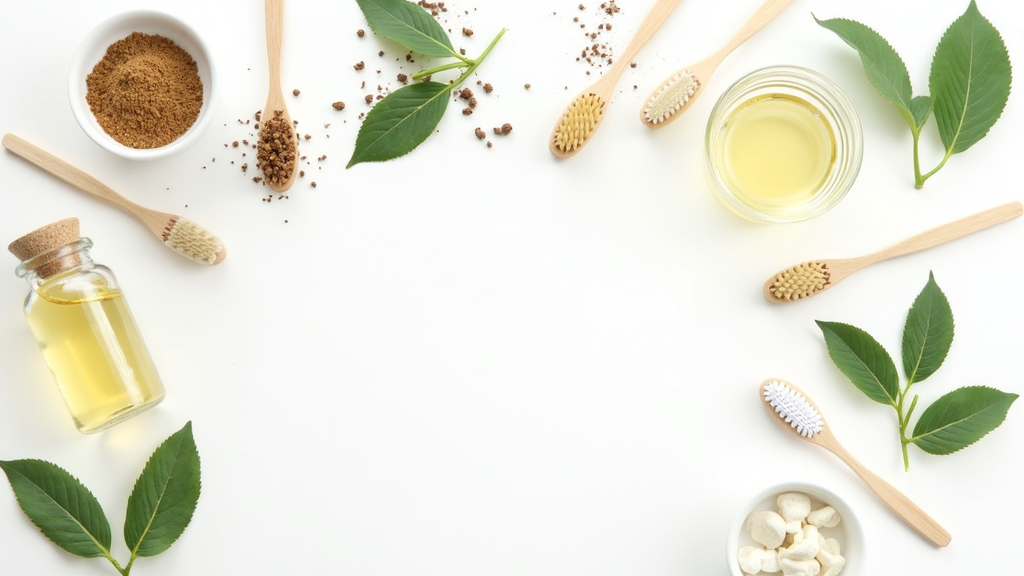 Herbal remedies aren’t just found in your kitchen or a wellness shop. They’re becoming part of modern dental clinics too. I’ve noticed these natural solutions getting lots of fans, from patients searching for gentler choices to dental professionals interested in less chemical-heavy care. If you’ve ever wondered how herbal care is changing dentistry and what’s really catching on, I’ve gathered real-world stories and research, plus a few of my tips for anyone curious about choosing the herbal path at their next dental checkup.
Herbal remedies aren’t just found in your kitchen or a wellness shop. They’re becoming part of modern dental clinics too. I’ve noticed these natural solutions getting lots of fans, from patients searching for gentler choices to dental professionals interested in less chemical-heavy care. If you’ve ever wondered how herbal care is changing dentistry and what’s really catching on, I’ve gathered real-world stories and research, plus a few of my tips for anyone curious about choosing the herbal path at their next dental checkup.
When I started hearing patients ask about alternatives to traditional mouthwashes or options for pain relief, I decided to dig into the science behind dental herbs. The connection between dentistry and plant-based medicine is actually much older than you might think. These days, the industry is seeing what I’d call a glow-up thanks to new research and easier access to global herbal traditions. Here’s what’s really happening, and what’s probably coming next.
Why Herbal Dental Care is Getting Popular Fast
This isn’t just a passing wellness trend. The interest in herbal dental care is growing because:
- People are eager for fewer synthetic chemicals in their mouths.
- Many are dealing with sensitivities to commercial products (think SLS or alcohol in mouthwashes).
- Recent studies show some herbal remedies are just as good—or even better than—standard treatments for gum health and bad breath.
- Herbal traditions from Ayurveda, Traditional Chinese Medicine, and Indigenous medicines are more available to both dentists and shoppers.
This shift is showing up in both mainstream oral care aisles and specialty stores, and dental journals are discussing the topic a lot more.
Up and Coming Herbs in Modern Dental Care
You might already know about clove oil for toothaches or tea tree oil in toothpaste. But lately, some new herbs are starting to shine in labs and clinics:
- Licorice Root (Glycyrrhiza glabra): This root has been researched for its power to hold back the growth of cavity-causing bacteria like Streptococcus mutans. New licorice-based lollipops and mouthwashes are showing up for this reason.
- Neem (Azadirachta indica): Used in India for centuries as a teeth cleaning stick, studies show neem extracts can cut down plaque, target bacteria, and calm inflamed gums. Today, neem toothpastes and rinses are easily found.
- Miswak (Salvadora persica): This classic chewing stick is gaining fans for its natural antibacterial and plaque-fighting abilities, plus it’s biodegradable.
- Propolis: Created by bees, this resin boasts major antimicrobial powers and is now featured in more natural toothpastes and oral sprays. Early research suggests benefits for mouth ulcers and gum health.
- Pomegranate (Punica granatum): More than just a superfruit, its extracts may tone down gum inflammation and help lower oral bacteria levels.
- Triphala: An Ayurvedic blend of three fruits, Triphala shows anti-gingivitis and antioxidant benefits. Mouthwashes and powders with it are now sold in both Eastern and Western markets.
It’s also good to point out that herbal dental products now come in easier forms—gels, lozenges, sprays, gums, and even probiotics mixed with plant extracts for better mouth balance.
What to Know Before Trying Herbal Dental Products
I always suggest a little caution before changing your dental routine. Here are points to watch for:
- Quality differs. Herbal products aren’t always strictly regulated. Search for brands that do third-party lab testing or are supported by dentists.
- Allergies are possible. Natural doesn’t mean risk-free. Some ingredients, like propolis or powerful essential oils, can lead to reactions.
- Mixing with dental care. Always let your dentist know if you’re adding herbal remedies, especially if you’re pregnant, going through chemotherapy, or have a compromised immune system. Certain herbs can affect medications or make sensitive mouths uncomfortable.
- Look up the science. Not every herbal claim is supported by good research. Reading quality studies or reviews can help separate fact from fiction.
The Most Eye-Catching Trends in Herbal Dental Care
Natural Mouthwashes and Pastes
Interest is climbing for mouthwashes with sage, myrrh, thyme, or green tea. These options offer mild antibacterial action and are often alcoholfree, making them ideal for anyone dealing with mouth dryness or irritation. I see new herbal lines launching every year, and many dentists use these for patients who can’t tolerate regular rinses.
Herbal Gum Treatments
Gum problems like periodontitis have pushed forward gels with chamomile, turmeric, and aloe vera. Some studies report that these help reduce bleeding and swelling, even compared to standard placebo gels. There’s more to learn here, but the options look handy for sensitive mouths and after deep cleanings.
Probiotic Herbal Blends
This is something new and worth a look. Some brands are now combining plant extracts with probiotics to balance mouth bacteria. It’s about using natural antibacterial benefits without knocking out “good” bacteria. Early studies are encouraging, and if you deal with mouth ulcers, bad breath, or want a milder routine, these combos are worth tracking down.
How I Fit Herbal Dental Products Into My Own Routine
Last year, I started using a neem toothpaste and a propolis mouth rinse. Personally, my gums felt calmer and my breath fresher, plus I didn’t get the usual burning aftertaste you get from mainstream rinses. I still use regular fluoride toothpaste some days, but herbal products give me a gentle reset, especially during allergy seasons or when my mouth feels sensitive. Every mouth is unique, so your results could be different.
- Start with one new herbal product at a time so you can spot what’s changing—for better or worse.
- If you get any bad symptoms (burning, itching, weird color changes), quit and talk to your dentist.
- Keep up with standard cleanings and checkups, even if you go allnatural in your routine.
Real Stories from Herbal Dental Converts
Here are tips from people I know and trust:
“I got fewer mouth ulcers after switching to an aloe and chamomile mouth rinse. My gums feel less upset, and I don’t get the ulcers as much.” – Rebecca D.
“Using miswak sticks felt odd at first. Now, my teeth are cleaner, and I use less toothpaste—bonus points when traveling.” – Amir S.
“Licorice tablets freshen my breath better than mints, and my last cleaning went faster—my hygienist mentioned it, too.” – Paul M.
How to Try Herbal Dental Trends Safely
- Pick brands your dentist trusts, or that clearly show ingredients and lab testing.
- Ask your dental provider if your herbal interest is a good match for you.
- Test new products first—try a little on your gums and see how your mouth reacts after a day.
- Don’t toss out your basics: keep brushing, flossing, and checkups, and treat herbal care as a bonus unless your dentist says otherwise.
Plant based solutions add choices and comfort to dental care. With ongoing research and more studies soon, it’s exciting to see gentler, natural options getting some love as they hit the mainstream for healthier teeth and gums.
